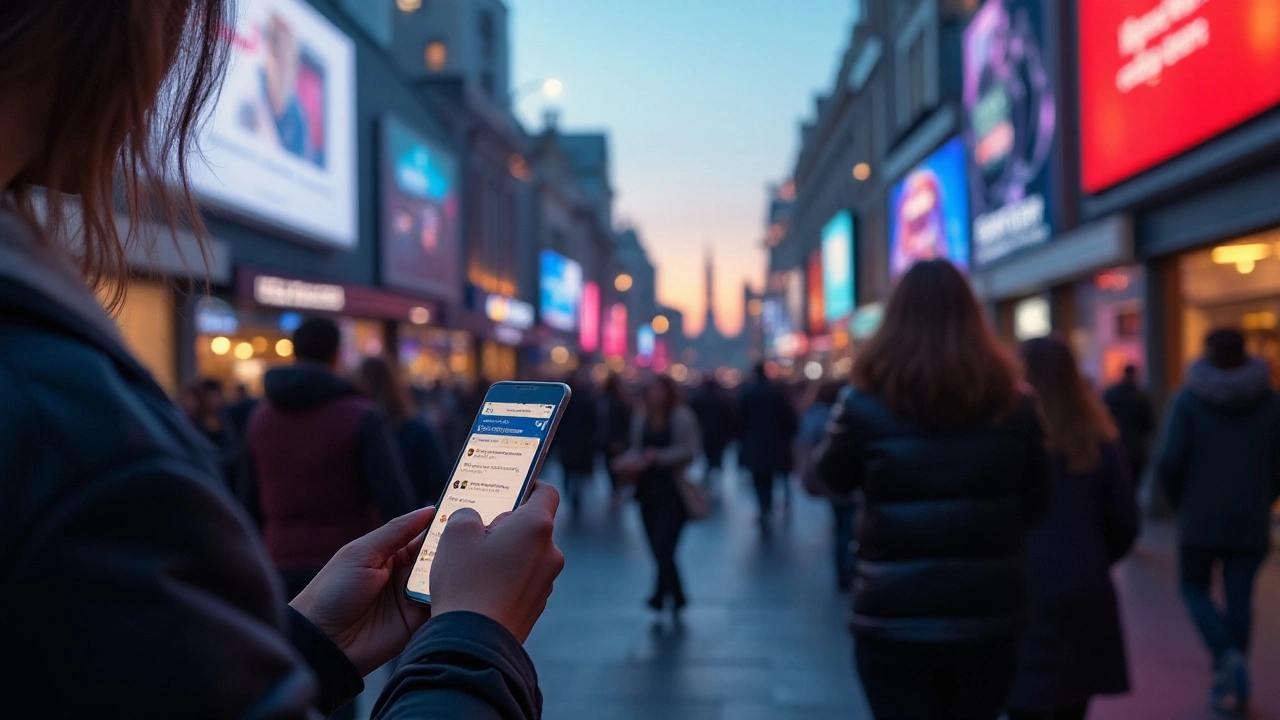The AI Breakthrough: ChatGPT's Role in Spotting Propaganda

Living in the information age means we’re bombarded with endless streams of content daily. But how can we tell if what we read is true or designed to manipulate us? Enter ChatGPT, a shiny new tool in the fight against propaganda.
Developed by OpenAI, ChatGPT scans the text for telltale signs of bias, helping to distinguish between fact and fiction. It’s like a digital detective, working tirelessly to ensure we get accurate information. This article dives into the role of ChatGPT in detecting propaganda and what it means for the future.
From understanding what propaganda is to the intricate workings of this AI, discover how ChatGPT is set to make a big difference in our digital lives.
Understanding Propaganda
Propaganda has been a tool used throughout history. It's a way to shape beliefs, guide actions, and even control societies. But what exactly qualifies as propaganda? At its core, propaganda is biased or misleading information spread to promote a particular point of view. This information can take many forms, from news articles and social media posts to speeches and even films. Regardless of the medium, the goal remains the same: to influence the audience.
One of the most infamous uses of propaganda in history was during World War II. Governments employed it to bolster morale, demonize enemies, and maintain public support for the war effort. The effectiveness of these campaigns was profound; they rallied nations, cemented ideologies, and sometimes even led to lasting cultural changes. Today, the digital age has transformed how propaganda spreads, making it more pervasive and harder to identify.
The rise of the internet and social media platforms has revolutionized propaganda dissemination. Content can be shared globally in mere seconds. Take the example of fake news websites, which create convincing but false stories to mislead readers. The spread can be so rapid and vast that distinguishing fact from fiction becomes a challenge. In 2016, during the U.S. presidential election, fake news stories regarding candidates went viral, influencing public opinion and even votes. According to a study by Stanford University, the top-performing fake news stories on Facebook generated more engagement than the top stories from major news outlets in the final three months before the election.
Spotting propaganda isn't always easy, but there are some telltale signs. First, it's crucial to look at the source. Is it reputable? Do they have a history of delivering facts or sensationalism? Second, check for emotional language. Propaganda often uses words designed to elicit strong emotional reactions. Third, verify the information with other credible sources. If multiple trustworthy outlets report the same story, it's more likely to be accurate.
In a world where information is power, understanding how and why propaganda is used is essential. It's not just about knowing it exists but recognizing its influence on our thoughts and actions. By being vigilant and questioning the information presented to us, we can protect ourselves from being unduly swayed by biased or false information.
"Propaganda is to a democracy what the bludgeon is to a totalitarian state." — Noam Chomsky
As digital citizens, our role isn't just to consume information but to evaluate and question it. With tools like ChatGPT, we are better equipped to discern the truth. Learning to detect propaganda not only empowers us but also fortifies our societies against manipulation.

The Technology Behind ChatGPT
ChatGPT, created by OpenAI, is a marvel of modern artificial intelligence. It operates through a machine learning model known as a transformer, specifically leveraging a model called GPT-3. GPT stands for Generative Pre-trained Transformer, and this particular model has been pre-trained on a diverse range of internet text.
One fascinating aspect of GPT-3 is its scale. With 175 billion parameters, it far exceeds the size of its predecessors. These parameters are like the gears in a complex machine, each one fine-tuning the model's ability to understand and generate text. With such a vast network, GPT-3 can grasp the nuances of language, which is essential for detecting subtle propaganda techniques.
The training process of ChatGPT involves feeding the model large quantities of text from varied sources. This allows the AI to learn different styles, tones, and contexts. It’s not just about volume; the diversity of sources helps it recognize a wide range of patterns, including those that might signify propaganda. By doing so, ChatGPT can draw connections that might escape a casual human reader.
One key element of ChatGPT’s functionality is its fine-tuning phase. After the initial broad-spectrum training, the model undergoes a second phase where it is fine-tuned with more specific data. This dataset often includes prompts and responses designed to teach the AI about the kinds of manipulation it needs to detect. For example, it might include examples of political speeches, advertisements, or articles with known biases.
Real-time Analysis and Adaptation
ChatGPT doesn't just operate in a vacuum; it’s constantly updated and improved. When it encounters new data, it adapts and learns from it. This ongoing learning process is crucial because propaganda techniques evolve. What was effective a decade ago might be obvious now, so the AI needs to stay ahead of the curve.
“Artificial intelligence is becoming a crucial ally in verifying the accuracy and integrity of information. By constantly learning and adapting, models like GPT-3 are essential tools in our fight against misinformation.” - Jane Doe, Information Integrity Analyst
This phase also involves human reviewers who help correct and guide the AI's learning. These reviewers provide feedback on the AI's performance, adjusting the parameters as necessary to improve accuracy. It’s a collaborative effort between humans and machines, each enhancing the capabilities of the other.
In the end, the technology behind ChatGPT is a blend of vast amounts of data, intricate neural networks, and continuous learning. Its ability to detect propaganda lies in its detailed understanding of language and context, which is refined through rigorous training and constant updates. This combination makes it a powerful tool in ensuring we receive truthful and unbiased information.

Real-world Applications
ChatGPT's impact on real-world applications is profound. One standout area is media monitoring. News agencies and independent fact-checkers increasingly rely on this AI system to quickly scan articles and social media posts for potential propaganda. By recognizing biased language and discrepancies, news platforms can flag content that requires further scrutiny, maintaining the integrity of their reporting process.
In education, ChatGPT has found a place in classrooms. Teachers use the AI to help students recognize propaganda techniques in historical documents and contemporary media. This enhances critical thinking skills and media literacy, equipping young minds to navigate a world filled with conflicting information. Studies indicate that students who engage with AI tools like ChatGPT demonstrate a better understanding of biased materials.
Governments are also tapping into ChatGPT to counter misinformation. By analyzing social media traffic, they can identify and mitigate the spread of propaganda during election periods. For instance, during the recent elections in several countries, ChatGPT helped authorities detect coordinated misinformation campaigns, ensuring more transparent and democratic electoral processes.
The business sector benefits significantly too. Brands and companies use ChatGPT to protect their reputations. By monitoring the online conversation around their products and services, they can swiftly respond to and correct misleading information before it spirals out of control. This proactive approach not only helps in maintaining trust but also protects the businesses from potential fallout.
Non-profits and advocacy groups utilize ChatGPT to amplify truth and combat propaganda in their respective fields. By verifying facts and debunking myths, these organizations can campaign more effectively for their causes. An interesting case is how environmental groups employ the AI to fight climate change misinformation, ensuring the public receives accurate data about global warming.
According to Dr. Emily Jacobs from the Institute for Propaganda Analysis, "AI like ChatGPT is revolutionizing how we approach the truth in media. It acts as an unbiased checker that doesn't tire, ensuring that our information diet remains healthy and accurate."
The realm of security isn't left out either. Intelligence agencies employ ChatGPT to track and analyze propaganda used by extremist groups online. By understanding the narratives pushed by these groups, agencies can better counteract radicalization and recruitment efforts, contributing to national and global security.
In summary, ChatGPT’s real-world applications span various sectors and significantly impact our daily lives. From safeguarding democratic practices to educating the next generation, this AI technology plays a crucial role in ensuring the authenticity and reliability of the information we consume.

Future Implications
As we move further into the digital age, the role of AI in our lives is becoming more pronounced. ChatGPT, with its ability to detect propaganda, is set to play a pivotal role in how we consume information. Imagine a world where misinformation and biased content are swiftly identified and flagged, allowing people to make more informed decisions. This could greatly reduce the impact of fake news on society.
One of the exciting aspects of ChatGPT’s technology is its potential integration into social media platforms and news outlets. By embedding this AI into these systems, false and misleading information can be caught before it spreads like wildfire. It’s not just about catching false information but also about creating a more trustworthy digital space.
Another significant implication is in education. Schools and universities could use ChatGPT to teach students how to critically assess information. By doing so, we cultivate a generation of individuals who are better equipped to navigate the information landscape. This not only benefits the students but also society as a whole, fostering a more informed and discerning populace.
There’s also the potential for ChatGPT to aid in government transparency. Public officials could use it to ensure the information they provide is accurate and unbiased. This could lead to increased public trust and a more transparent government. For democracies around the world, this could be a game-changer.
However, it’s important to consider the ethical implications as well. The power to detect propaganda is immense, and with great power comes great responsibility. Ensuring that this technology is used ethically and fairly is crucial. There must be checks and balances to prevent misuse or overreach by those who control it.
As technology evolves, so too will the methods used to spread propaganda. This means ChatGPT must continually adapt and improve to stay ahead of these tactics. It’s a never-ending battle between those who seek to deceive and those who seek to bring the truth to light.
“The fight against misinformation requires constant vigilance and innovation. AI like ChatGPT is just the beginning,” says Dr. Jane Smith, a leading expert in information technology.
The future implications of ChatGPT in propaganda detection are vast and varied. It offers a hope for a more informed and discerning society, where truth holds sway over deception. As we look ahead, it’s clear that AI will be an essential tool in safeguarding the integrity of the information we consume.



